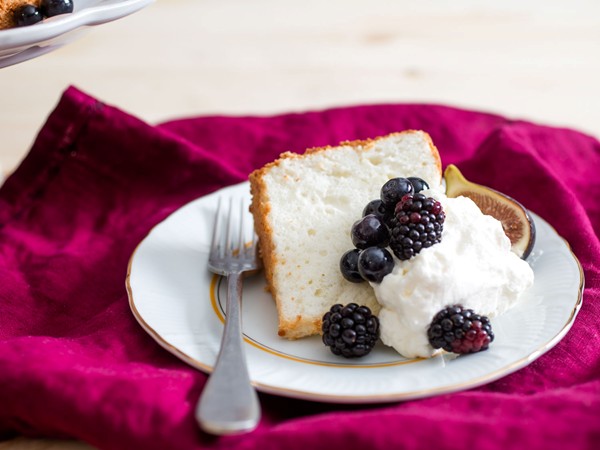Why one baker swears by bleached cake flour
May 8, 2016 by Darcie 
Coinciding with the trend toward less processed food, many bakers have switched from bleached flour to unbleached. Not so Stella Parks, also known as BraveTart. The pastry chef, writing for Serious Eats, tells us why she swears by bleached cake flour for her baking.
Cake flour is a very low protein flour, usually less than 8%. All-purpose flour usually clocks in between 10 and 13%, but those few percentage points make all the difference to cakes, which contain much more moisture than other baked goods. Since water interacts with the proteins to form gluten, having less protein is vital to getting tender, fluffy cakes. For over 100 years, American cake flour has been bleached, but recently more producers have offered unbleached versions. Stella says that using this flour will lead to disappointment, especially when making delicate cakes like angel food cake.
While she agrees that the thought of the flour being treated with chlorine isn’t appealing, Stella believes that bleached flour gets a bum rap. “For starters,” she says, “manufacturers aren’t pouring buckets of chlorine into cake flour-they’re treating it through low-level exposure to chlorine gas. We’re talking about concentrations ranging from 0.008% to 0.3% relative to the weight of the flour. But in no way, shape, or form does that much chlorine wind up in your food.” While it may sound scary, there has been no study showing any risks to consumers in eating anything made with bleached flour.
For Stella, the benefits far outweigh any negative aspects to using bleached cake flour. The bleaching process “alters the normal rate of starch gelatinization in flour, slowing it in a way that improves gas retention. This allows the batter more time to rise, resulting in super-lofty, fine-grained cakes,” she explains. Chlorination also lowers the pH of cake flour. This slight shift towards acidity inhibits the Maillard reaction, which may not be great for cookies or breads, but works great for cakes. It means that more delicate flavors can shine through because they aren’t overwhelmed by the darker toffee notes that accompany browning.
The DIY alternatives to cake flour – including adding cornstarch to all-purpose flour to lower its protein levels – aren’t a perfect substitute for bleached flour, says Stella. While cornstarch reduces the overall protein content of the flour, “it jacks up the starch in a totally different way. The result is a highly absorbent dry mix that soaks up way too much moisture, for a cake that bakes up heavy and dense,” she notes.
Photo of Effortless angel food cake from indexed blog Serious Eats
Categories
- All Posts (6940)
- Antipasto (2135)
- Author Articles (247)
- Book News (935)
- Cookbook Giveaways (983)
- Cookbook Lovers (257)
- Cooking Tips (109)
- Culinary News (299)
- Food Biz People (552)
- Food Online (791)
- Holidays & Celebrations (272)
- New Cookbooks (149)
- Recipes (1500)
- Shelf Life With Susie (231)
- What's New on EYB (133)
Archives
Latest Comments
- kmwyman on Rooza by Nadiya Hussain – Cookbook Review and Giveaway
- Maryd8822 on The Golden Wok – Cookbook Giveaway
- Dendav on Danube Cookbook Review and Giveaway
- sanfrannative on Rooza by Nadiya Hussain – Cookbook Review and Giveaway
- darty on Danube Cookbook Review and Giveaway
- Atroyer7 on Danube Cookbook Review and Giveaway
- demomcook on What foods do you look forward to the most for each season?
- demomcook on Danube Cookbook Review and Giveaway
- Darcie on How cookbooks can help build resilience
- mholson3 on Danube Cookbook Review and Giveaway